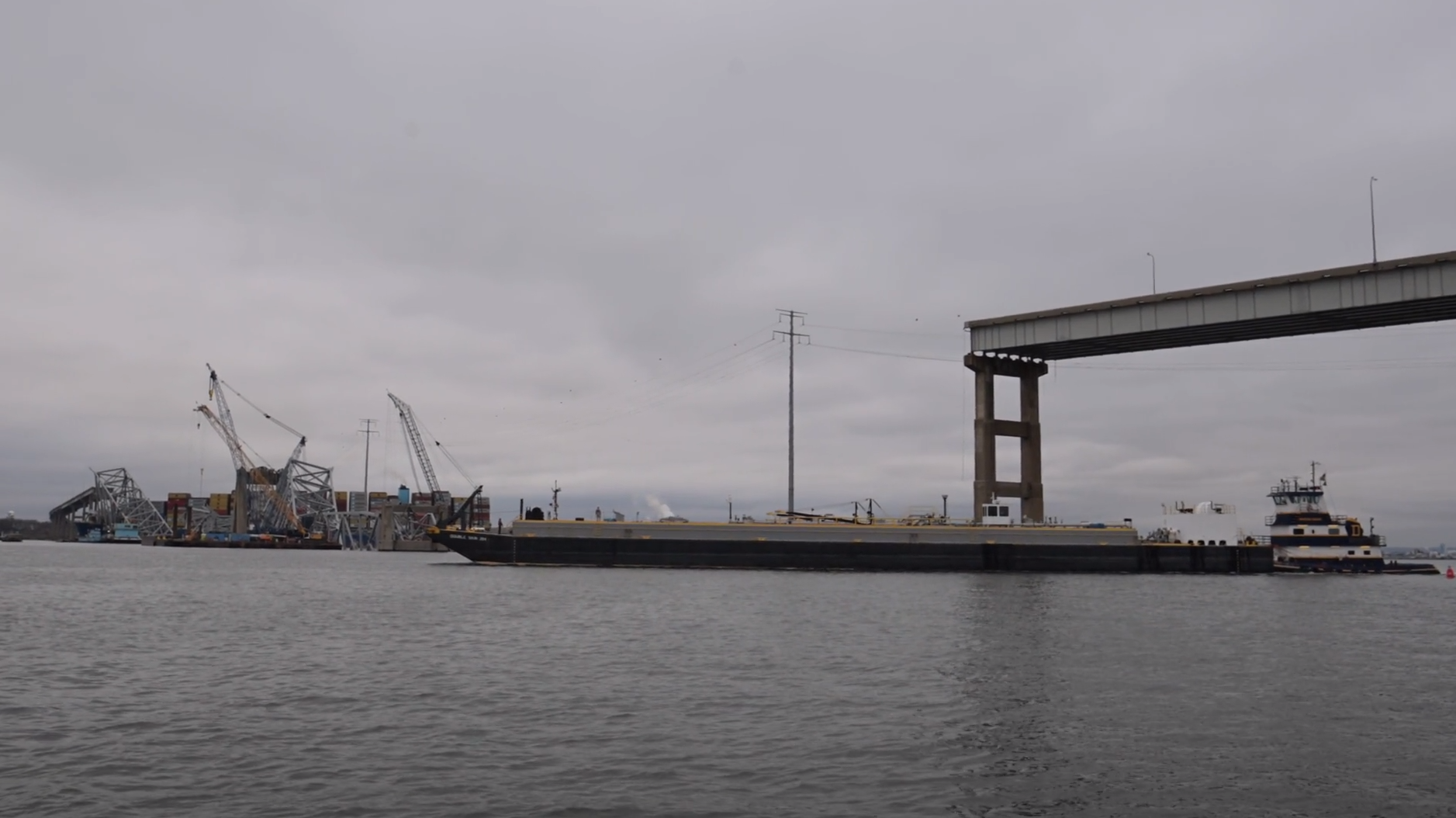
BALTIMORE – In a development since the Key Bridge incident on Tuesday, the tugboat Crystal Coast made history today by traversing the temporary alternate channel forged by the Key Bridge Response Unified Command. The vessel, accompanied by a fuel barge, sailed through the channel at 3 p.m., marking the initial transit since the bridge’s collapse into the federal waterway.
The fuel barge, essential for supplying jet fuel to the Department of Defense (DOD), was en route to Dover Air Force Base. The maneuver comes as a crucial step forward amidst ongoing efforts to restore maritime traffic in the aftermath of the bridge collapse.
According to reports from the Unified Command, the Captain of the Port (COPT) has established the temporary alternate channel near Sollers Point, specifically designated for commercially-essential vessels. Positioned on the northeast side of the main ship channel, in close proximity to the Francis Scott Key Bridge, this channel forms a pivotal component of the phased approach toward reopening the main federal channel.
This temporary passage is clearly marked with government-lighted aids to navigation, ensuring safe navigation for vessels. However, transit through this channel remains subject to the discretion of the COTP and is permitted solely during daylight hours. The channel boasts a controlling depth of 11 feet, with a horizontal clearance of 264 feet and a vertical clearance of 95 feet, providing vital specifications for vessels navigating through.
Efforts are underway to establish a secondary temporary alternate channel on the southwest side of the main channel, catering to deeper draft vessels. It’s anticipated that this secondary channel will accommodate draft restrictions ranging from 15 to 16 feet, facilitating the passage of a broader spectrum of maritime traffic.
The operational scene is abuzz with activity, with two crane barges, including a 650-ton crane and a 330-ton crane, actively engaged in the removal of wreckage. The debris is systematically lifted and transferred to a barge, in alignment with daylight allowances.
A 230-ton land-based crane stationed at Tradepoint Atlantic will undertake the responsibility of offloading and processing the recovered wreckage. Subsequently, the debris will be transported to a designated disposal site, streamlining the cleanup process.
Despite progress, stringent safety measures remain in place to safeguard personnel, vessels, and the marine environment. A 2,000-yard safety zone encircling the Francis Scott Key Bridge remains in effect, prohibiting unauthorized access. Those within the safety zone are mandated to adhere to directives issued by the COTP or designated representatives.
The Key Bridge Response 2024 Unified Command, comprising entities such as the U.S. Coast Guard, U.S. Army Corps of Engineers, Maryland Department of the Environment, Maryland Transportation Authority, Maryland State Police, and Witt O’Brien’s representing Synergy Marine, is at the forefront of coordinating response efforts.
As operations continue, the Unified Command remains steadfast in its commitment to ensuring public safety, facilitating transportation infrastructure restoration, and supporting ongoing investigations.
Source: Maryland port authorities

